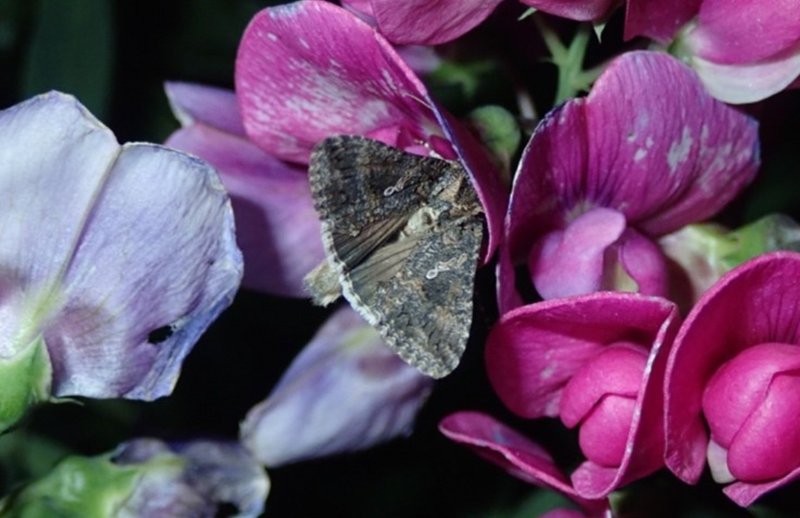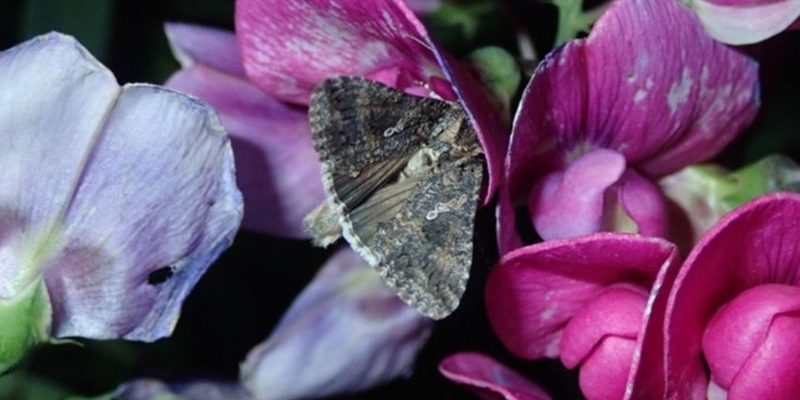
If you’ve ever strolled through a garden full of greens, you might have come across some not-so-friendly visitors. One such culprit is the Cabbage Looper, a sneaky little caterpillar that can make quick work of your prized vegetables. Think of it as the party crasher at a veggie gathering—cute but ultimately destructive. These little guys are best known for their distinctive looping motion, which makes them appear to dance across the leaves as they munch their way through your crops.
The Cabbage Looper is the larval stage of the moth known as Trichoplusia ni. These caterpillars are primarily found in North America and can become a significant pest for farmers and home gardeners alike. They eagerly feast on various leafy greens, especially cabbage, which gives them their name. But knowing more about them can help you safeguard your garden and get a better grasp on these fascinating, if troublesome, insects.
What Does a Cabbage Looper Look Like?
The appearance of a Cabbage Looper is quite striking and unique. These caterpillars are typically green, which allows them to blend in with the leaves they love to munch on. They have a smooth body and reach about 2 to 3 inches in length. What’s most fascinating, though, is their distinct movement—rather than crawling like many caterpillars, they curve their bodies into a loop. This unique movement is not only cute to observe but also a clever tactic for avoiding predators.
On closer inspection, you may notice fine, white stripes running along their sides, which adds to their camouflage. Adult Cabbage Loopers, on the other hand, are brownish-gray moths with characteristic angular wings, which can make them look a bit like a piece of bark when they rest. This disguise helps them evade birds and other predators that see them as a tasty snack.
Habitat and Distribution
The Cabbage Looper thrives in a variety of habitats but has a strong preference for areas where its favorite food grows—like cabbage, broccoli, and kale. These caterpillars enjoy leafy greens, so you’ll commonly find them in gardens, farms, and fields rich with these crops. They are particularly prevalent in the temperate regions of North America, but their range can extend into other areas depending on climate and food availability.
During warmer months, Cabbage Loopers can be found in abundance, as their life cycle is closely tied to the growing season of their host plants. You might come across them in home gardens, community gardens, and commercial farms during spring and summer, especially when cabbage and related crops are flourishing. However, as temperatures drop, they often migrate or hibernate in the soil, waiting for the right conditions to emerge again.
Life Cycle and Behavior
The life cycle of a Cabbage Looper is fascinating and typical of many moths. It begins when adult female moths lay tiny eggs on the underside of leaves. These eggs hatch into caterpillars, which are the Cabbage Loopers we’re discussing. As they grow, these caterpillars go through several stages, known as instars, before they pupate into moths. This metamorphosis usually takes about three weeks.
Cabbage Loopers are particularly voracious feeders, consuming large quantities of foliage during their caterpillar stage. This can result in significant damage to plants, as they can quickly strip leaves down to the veins. One interesting behavior to note is their tendency to feed at night, which helps them avoid predators. During the day, they often remain still, camouflaged on the leaves, making it hard to spot them.
Diet and Feeding Habits
The diet of a Cabbage Looper primarily consists of leafy greens. As the name suggests, they have a penchant for cabbage, but they also enjoy broccoli, kale, cauliflower, and other cruciferous plants. When they’re in their caterpillar stage, they can be quite destructive, often leaving behind skeletonized leaves and even entire plants chewed down to nothing. A hungry Cabbage Looper can do a lot of damage in a short time!
One thing to keep in mind is that their feeding habits are not just about sustenance; they also play a role in their development. The nutrients they consume help them grow, eventually preparing them for their transformation into moths. If you’re gardening, keeping an eye on these little eaters is crucial. Regularly checking your plants for signs of damage can help you manage their population before they become an overwhelming problem.
Control and Prevention
Dealing with Cabbage Loopers can be frustrating, but there are several strategies you can use to keep them at bay. First, actively monitoring your garden for these caterpillars is essential. Regularly check the underside of leaves for eggs or small caterpillars, especially during their peak season. If you spot them early, you can often remove them by hand, which is an effective and environmentally friendly method.
Another technique is using row covers. These lightweight fabrics can provide a barrier between the caterpillars and your plants, preventing them from laying eggs in the first place. Additionally, introducing natural predators, such as ladybugs or parasitic wasps, can help keep Cabbage Looper populations in check. These beneficial insects will feed on the caterpillars or their eggs, reducing the damage in your garden.
Interesting Facts About Cabbage Loopers
| Scientific Name: | Trichoplusia ni |
| Size: | 2 to 3 inches long |
| Life Cycle: | 3-4 weeks (from egg to adult) |
| Habitat: | Gardens, farms, fields |
| Diet: | Cabbage, broccoli, kale, and other leafy greens |
| Behavior: | Active at night, stationary during the day |
Impact on Agriculture
For farmers, the Cabbage Looper can be a major headache. Their feeding habits can lead to significant crop loss, especially in commercial cabbage and broccoli fields. Left unchecked, a small population of these caterpillars can quickly become a full-blown infestation. This not only impacts the quality of the crop but can also have financial repercussions for farmers.
Integrating pest management practices is crucial for those in agriculture. This includes using biological control methods, like introducing beneficial insects or using organic pesticides that target caterpillars while being less harmful to other wildlife. Crop rotation can also help, making it harder for these pests to establish themselves in a specific area.
The Cabbage Looper may be a small caterpillar, but it plays a big role in the ecosystem and can significantly impact gardening and agriculture. Understanding their habits, life cycle, and the potential damage they can cause is essential for anyone who grows leafy greens. By keeping an eye on their populations and employing a mix of control strategies, you can protect your gardens and ensure your crops remain healthy.
FAQ
What is the best way to get rid of Cabbage Loopers?
The most effective method of controlling Cabbage Loopers starts with early detection. Regularly inspect your plants for signs of caterpillars. Handpicking them off the leaves can be a simple yet effective solution if you catch them early. Additionally, using organic pesticides that are safe for plants and beneficial insects can help manage larger infestations.
Are Cabbage Loopers harmful to humans?
Not at all! Cabbage Loopers pose no direct harm to humans. Their primary focus is on plants, particularly cabbage and other leafy greens. While they may be pests in the garden, they do not bite or sting, making them a relatively non-threatening presence in our environment.
How can I tell if my plants are infested with Cabbage Loopers?
Look for telltale signs such as damaged leaves with irregular holes or a skeletonized appearance. You may also notice droppings (frass) on the leaves or on the ground below the plants. Inspecting the undersides of leaves is particularly crucial, as that’s where the eggs are typically laid.
Do Cabbage Loopers have any natural predators?
Yes! Cabbage Loopers have several natural predators, including birds, ladybugs, and specific parasitic wasps. These beneficial insects can help keep their populations in check, so promoting biodiversity in your garden can be an effective way to manage these caterpillars.
Can Cabbage Loopers survive winter?
Cabbage Loopers do have strategies to survive colder months. They may pupate and spend winter in the soil or as eggs, waiting for warmer temperatures to emerge. In spring, they can quickly come out to feed on new leafy greens as they become available.
How fast do Cabbage Loopers grow?
From egg to adult moth, the complete life cycle of a Cabbage Looper generally takes about three to four weeks under optimal conditions. Caterpillars typically go through several instars, shedding their skin as they grow before entering the pupal stage.
Are Cabbage Loopers found outside of North America?
While Cabbage Loopers are primarily found in North America, they can also appear in parts of Central America and some regions of Europe. Their presence in other areas tends to correlate with the availability of their favorite leafy greens. In places where cabbage is grown, you might find them lurking around.
What plants attract Cabbage Loopers?
Cabbage Loopers are most attracted to cruciferous plants, including cabbage, broccoli, kale, and cauliflower. If you have these plants in your garden, keep a close eye—these caterpillars will likely be eager to feast! You can also use companion planting to deter them by including flowers that attract beneficial insects nearby.

